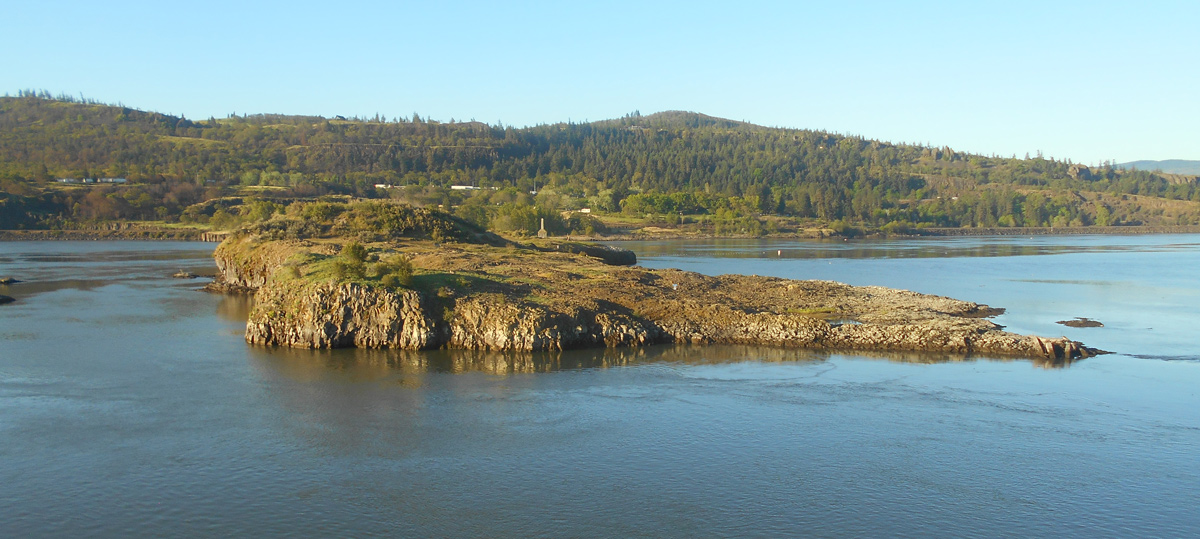Moving 35 miles down the Columbia, the expedition encounters many friendly Sahaptin and Upper Chinook villages. They pass an island with numerous graves—Memaloose. They also see their first California condor and camp above the Little White Salmon River.
Memaloose Island above is covered with the low green grasses prevalent throughout the Columbia River Gorge during the Expedition’s return in April 1806.
Chilluckittequaw Village
a Cloudy morning wind Still from th West not hard, we Set out at day light proceeded on about 5 miles and Came too at a Lodge of a Chief which we made at the upper village at th falls about his house there is Six others This chief gave us to eate Sackacommis burries [bearberries] Hasel nuts fish Pounded, and a kind of Bread made of roots— we gave to the Women pices of ribon, which they appeared pleased with—
—William Clark
Friendly Villages
Those people are friendly gave us to eate fish Beries, nuts bread of roots & Drid beries and we Call this the friendly Village We purchased 12 dogs of them & 4 Sacks of Pounded fish, and Some fiew Dried Berries and proceeded on at 4 miles further we landed to Smoke a pipe with the people of a village of 11 houses we found those people also friendly Their Village is Situated imediately below the mouth of a River
—William Clark
War Trophies
The Chief then directed his wife to hand him his medison bag which he opened and Showed us 14 fingers which he Said was the fingers of his enemies which he had taken in war
—William Clark
Island of the Dead – Wishham (Memaloose Island c. 1909)
Edward S. Curtis (1868–1952)
© 2001 Northwestern University Library, Edward S. Curtis’s ‘The North American Indian’: the Photographic Images.
Sepulcher (Memaloose) Island
The Countrey on each side begin to be thicker timbered with Pine and low white Oake; verry rockey and broken. passed three large rocks in The river the middle rock is large long and has Several Squar vaults on it. we call this rockey Island the Sepulchar—
—William Clark
High Waterfall
Saw a beautiful Spring on the Lard. Side, which run off a high clift of rocks, and fell of the clift upwards of a hundred feet perpinticular. the country Mountaineous. high clifts on the River. mostly covred with pine timber.
—John Ordway
Little White Salmon River
Those people gave us, High bush cram berries, bread made of roots, and roots; we purchased three dogs for the party to eate; we Smoked with the men, all muche pleased with the violin—.
—William Clark
Weather Diary
Day of the month Wind State of the Weather 29th W. fair after rain rained moderately all day. Saw the first large Buzzard or Voultur of the Columbia [condor].
—William Clark[1]Some abbreviations have been spelled out.
Experience the Lewis and Clark Trail
The Lewis and Clark Trail Experience—our sister site at lewisandclark.travel—connects the world to people and places on the Lewis and Clark Trail.
Plan a trip related to October 29, 1805:

Notes
| ↑1 | Some abbreviations have been spelled out. |
|---|


